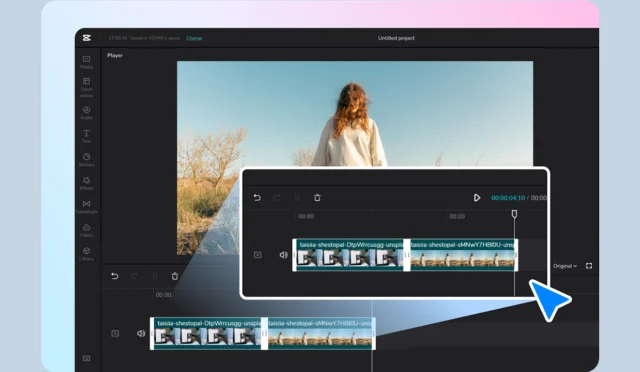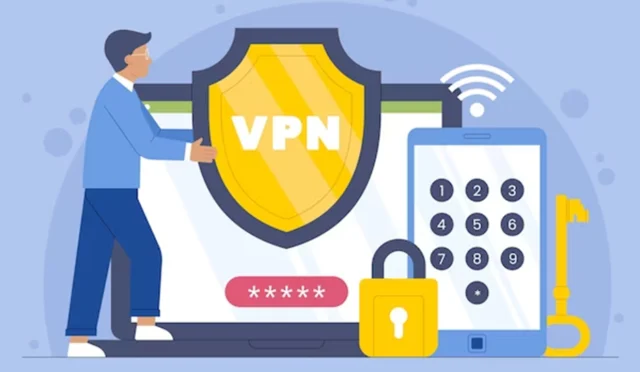New Zealand’s hiking trails offer some of the world’s most breathtaking landscapes, from the rugged peaks of the Southern Alps to the coastal beauty of Abel Tasman. But while you’re planning your adventure through these remote wilderness areas, there’s one practical concern that often gets overlooked: staying connected. Whether you need GPS navigation on the Routeburn Track or want to share summit photos from Mount Cook, having reliable mobile data can make the difference between a smooth trek and a stressful situation.
Choosing the right mobile data solution for New Zealand’s hiking trails isn’t as simple as picking up any SIM card at the airport. The country’s unique terrain, with its mountains, fjords, and dense forests, creates connectivity challenges that require careful planning. This guide walks you through the real-world mobile data options available to hikers, helping you make an informed decision before you hit the trails.
Challenges of Staying Connected on New Zealand Hikes
Before diving into solutions, it’s important to understand what makes staying connected on New Zealand trails particularly difficult. The country’s stunning natural beauty comes with technical challenges that affect every mobile data option.
Spotty Coverage in Remote Areas
New Zealand’s hiking trails often wind through areas where cellular infrastructure is limited or nonexistent. Even popular tracks like the Tongariro Alpine Crossing have stretches where your phone won’t find any signal for hours. The mountains block transmission, and valleys create dead zones that no carrier can fully overcome. Major providers like Spark, Vodafone, and 2degrees have improved their rural coverage, but expecting consistent connectivity throughout a multi-day hike sets unrealistic expectations.
Battery Drain from Constant Signal Search
When your phone can’t find a stable connection, it works overtime searching for towers. This constant scanning drains your battery faster than normal use. On a full-day hike, you might start with 100% battery at sunrise and find yourself at 20% by afternoon, even if you barely used your phone. This becomes critical when you’re depending on your device for navigation or emergency contact.
Navigation and Safety Needs During Treks
Unlike urban travel where you can ask locals for directions, hiking trails demand reliable navigation tools. Missing a track marker or taking a wrong turn in poor weather can turn dangerous quickly. Your phone serves as your primary safety device, needed for downloading trail conditions, checking weather updates, and contacting emergency services through New Zealand’s 111 system if something goes wrong.
Key Mobile Data Requirements for Hikers
Understanding what you actually need from your mobile data plan helps narrow down the best option for your hiking style and trail choices.
Reliable Signal for GPS and Maps
GPS functionality on your phone doesn’t require cellular data to work, but downloading maps, getting real-time weather updates, and accessing trail information does. For day hikes near populated areas, you might get away with minimal connectivity. However, for remote multi-day treks, you’ll want a data plan that works with New Zealand’s major networks. Opting for a new zealand esim tourist plan gives you access to local networks without the hassle of finding a physical store.
Data Limits for Sharing Photos and Updates
Many hikers want to share their experiences with friends and family back home. Uploading photos and videos consumes significant data, especially in areas with slow connections where files take multiple attempts to send. A weekend trip might use 2-3GB if you’re actively sharing content, while a week-long adventure with daily updates could require 5-10GB depending on your usage habits.
Emergency Communication Options
The most important function of mobile data on trails is emergency communication. New Zealand’s Department of Conservation (DOC) recommends carrying a working mobile phone on all hikes, and having active data means you can access emergency services information, send location details, or use messaging apps when voice calls fail. Some tracking apps also let your contacts see your real-time location, adding an extra safety layer.
Comparing Mobile Data Options in New Zealand
New Zealand offers several ways to stay connected while hiking. Each option comes with distinct advantages and limitations that matter when you’re far from civilization.
Local SIM Cards from NZ Providers
Physical SIM cards from New Zealand carriers remain a popular choice for international hikers. Providers like Spark, Vodafone, and 2degrees sell prepaid options at airports, convenience stores, and mobile shops throughout the country.
Setup Process and Costs
Getting a local SIM requires finding a store, choosing a plan, and physically swapping the card in your phone. Plans typically start around NZD 20-30 for basic data packages. You’ll need to provide identification and complete activation, which can take 15-30 minutes. For hikers landing at Auckland or Christchurch airports, kiosks in the arrivals area make this relatively convenient.
Coverage Strengths and Weaknesses
Spark generally offers the strongest rural coverage, reaching more remote hiking areas than competitors. Vodafone provides good coverage on popular trails near major tourist regions. 2degrees, while offering competitive prices, has more limited coverage in backcountry areas. No carrier guarantees consistent signal throughout entire hiking trails, but Spark tends to maintain connection longer as you venture into wilderness zones.
International Roaming Plans
Many travelers consider keeping their home carrier’s roaming service active during their New Zealand trip. While this seems convenient, it rarely makes financial sense for hikers spending significant time in the country.
Hidden Fees and Speed Throttling
International roaming charges from US, European, or Asian carriers can reach $10-15 per day just for basic data access. Some plans include “unlimited” roaming, but the fine print reveals heavy speed restrictions after minimal usage. You might get 500MB at normal speeds before being throttled to unusable 2G speeds, making map downloads and photo uploads frustratingly slow.
Compatibility with Home Carriers
Not all roaming agreements cover New Zealand’s smaller carriers or rural towers. Your home carrier might only have partnerships with one New Zealand network, limiting where you can get signal. This becomes problematic on hiking trails where different carriers have coverage in different areas. If you’re also planning to visit other destinations, considering options like an esim for uk and europe might complement your New Zealand connectivity plan for a broader trip.
Portable Wi-Fi Devices
Pocket Wi-Fi devices, also called mobile hotspots, offer another connectivity option that some hiking groups prefer for sharing data among multiple travelers.
Rental Availability at Airports
Companies like New Zealand Telecom and various tourism-focused rental services offer pocket Wi-Fi devices at major airports. Daily rental costs typically range from NZD 10-15, with data limits varying by plan. You’ll need to return the device before departure, adding an extra task to your travel logistics.
Limitations in Rugged Terrain
Portable Wi-Fi devices face the same coverage limitations as phones, since they use the same cellular networks. They add extra weight to your pack, require separate battery management, and create another device that can fail in wet or rough conditions. For solo hikers, carrying an additional device just for internet access rarely makes practical sense.
Benefits of eSIMs for Trail Connectivity
Electronic SIM technology has transformed how travelers stay connected, offering advantages that traditional options can’t match. For hikers exploring New Zealand’s trails, eSIMs solve several practical problems.
Quick Activation Without Physical Cards
Unlike traditional SIM cards requiring you to find stores and swap physical chips, eSIMs activate digitally within minutes. You can purchase and install your plan before leaving home, eliminating airport stress and ensuring you have connectivity the moment you land. This matters when you’re rushing from the airport to catch a bus to your trailhead.
Multi-Country Coverage for Extended Trips
Many eSIM providers offer regional plans covering multiple countries. If your adventure includes stops in Australia before or after New Zealand, or you’re combining your trip with other destinations, a single eSIM plan can cover your entire journey. This flexibility appeals to long-term travelers exploring multiple regions without constantly switching connectivity solutions.
Flexible Data Plans for Short Hikes
Traditional SIM cards often require committing to monthly plans or large data packages you won’t fully use. eSIM providers offer granular options, from weekend packages perfect for a quick Tongariro crossing to extended plans for hiking the Te Araroa Trail. You pay for exactly what you need, nothing more.
Why Choose Simify for Your New Zealand Hiking Adventures
When selecting an eSIM provider for your New Zealand hiking trip, not all services deliver equal value for trail use. Simify stands out for several reasons that matter when you’re miles from the nearest town.
Seamless eSIM Setup for Instant Access
Simify’s platform works through a simple app interface that guides you through eSIM installation step-by-step. You don’t need technical knowledge or complicated configuration. Purchase your plan, scan a QR code, and you’re connected. This simplicity proves valuable when you’re dealing with jet lag or coordinating complex hiking logistics.
Tailored Plans for Remote Trail Use
Generic data plans don’t account for the specific usage patterns of hikers. Simify offers New Zealand packages designed with outdoor adventures in mind, providing enough data for GPS navigation, weather checks, and emergency communication without expensive overages. Their plans connect to New Zealand’s strongest networks, maximizing your chances of getting signal in remote areas.
Cost-Effective Alternatives to Roaming
Compared to international roaming from home carriers, Simify’s pricing typically saves 60-70% on data costs. A week-long hiking trip that might cost $70-100 in roaming fees becomes $20-30 with an appropriate eSIM plan. These savings add up, especially for longer adventures or travelers visiting New Zealand as part of broader trips through Asia Pacific regions.
Tips for Managing Data on New Zealand Trails
Having the right data plan matters, but smart usage strategies extend your connectivity and battery life throughout your hike.
Offline Maps and App Optimization
Download complete offline maps for your hiking areas before leaving your accommodation. Apps like Maps.me, Gaia GPS, and AllTrails let you store entire trail systems for offline use. This means you can navigate even without signal while only using minimal data to download weather updates or share your location when coverage appears.
Google Maps also allows offline area downloads. Before heading to trails near Queenstown, Wanaka, or Fiordland, download those regions while on Wi-Fi. Your GPS will still function perfectly, showing your location on saved maps without consuming any data.
Signal Boosters and Backup Devices
Some hiking groups carry portable signal boosters designed for outdoor use. These devices can amplify weak signals in marginal coverage areas, though they don’t work where absolutely no signal exists. For serious remote hiking, consider carrying a Personal Locator Beacon (PLB) as ultimate backup. New Zealand’s Mountain Safety Council recommends PLBs for multi-day backcountry trips where mobile coverage is unreliable.
Data-Saving Strategies for Long Hikes
Disable automatic app updates and background data refresh before your hike. These hidden processes consume data without you realizing it. Switch your phone to airplane mode with only GPS enabled when you don’t need connectivity, dramatically extending battery life. When you need to check weather or send a message, turn cellular data back on briefly, complete your tasks, then return to airplane mode.
Compress photos before uploading them using apps or built-in phone features. A 12MB photo can be reduced to 2-3MB without visible quality loss on social media, letting you share five times more images with the same data usage.
Preparing Your Device for NZ Hiking Data
Proper preparation prevents connectivity problems and ensures your mobile data solution works when you need it most.
Checking eSIM Compatibility
Most iPhones from XS/XR models onward support eSIM technology, as do many recent Android devices from Samsung, Google Pixel, and other manufacturers. Check your specific model’s compatibility before purchasing any eSIM plan. Your phone’s settings menu typically shows eSIM capability under cellular or mobile data options.
Verify that your phone is carrier-unlocked. Locked devices won’t accept eSIM profiles from other providers. Contact your home carrier before traveling if you’re uncertain about lock status. Unlocking usually takes 24-48 hours, so handle this well before departure.
Testing Coverage Before Departure
Research specific trail coverage using New Zealand carrier coverage maps available online. Spark and Vodafone publish detailed maps showing 4G and 3G coverage areas. While these maps aren’t perfectly accurate for mountainous terrain, they give you realistic expectations about where you’ll likely have signal.
Join hiking forums or Facebook groups for New Zealand trails and ask about recent connectivity experiences. Fellow hikers often share detailed information about which carriers work best on specific tracks, down to noting where signal appears and disappears along popular routes like the Milford Track or Kepler Track.
Updating Apps for Better Performance
Update your maps, weather, and messaging apps before leaving home on Wi-Fi. Outdated apps sometimes have bugs that drain data or battery faster than necessary. Newer versions often include better offline functionality and more efficient data usage.
Install New Zealand-specific apps that help with hiking. The DOC’s app provides trail information and weather updates optimized for local conditions. MetService offers detailed backcountry weather forecasts essential for safe hiking in New Zealand’s changeable mountain weather.
According to the New Zealand Department of Conservation, proper preparation including communication plans significantly improves safety outcomes on remote trails. Making sure your mobile data solution is ready before you start hiking is part of responsible backcountry preparation.
FAQ
How Much Data Do I Need for a Week-Long Hike in New Zealand?
For basic GPS navigation using offline maps, weather checks, and occasional messaging, 2-3GB should suffice for a week. If you plan to upload photos daily or video chat with family, increase this to 5-7GB. Heavy social media users sharing high-resolution content might need 10GB or more. Consider that you’ll likely have Wi-Fi at lodges or huts on popular trails, reducing your cellular data needs.
Will My Phone Work with New Zealand eSIMs If It’s Locked?
No, carrier-locked phones cannot use eSIMs from other providers. You must have an unlocked device to use any New Zealand eSIM service. Contact your home carrier to request unlocking before your trip. This process is usually free if you’ve completed your phone contract, though some carriers charge fees for early unlocking.
What Happens If I Run Out of Data Mid-Trail?
Most eSIM providers, including Simify, allow you to top up your data plan through their app whenever you have signal. You’ll need cellular connection or Wi-Fi to purchase additional data, so consider topping up before entering remote sections if you’re cutting it close. Some multi-day hikes have emergency phones or ranger stations where you might access Wi-Fi for topping up.
Are eSIMs Cheaper Than Local SIMs for Short Visits?
For short trips of 3-7 days, eSIMs typically cost similarly to local prepaid SIMs but save you time and hassle. The real advantage isn’t necessarily cost but convenience and flexibility. For longer stays over two weeks, local SIM plans might offer better value per gigabyte, though eSIMs remain more convenient for travelers continuing to other countries.
How Reliable Is Coverage on Popular Trails Like Milford Track?
The Milford Track has intermittent coverage, primarily near the start at Glade Wharf and at some hut locations, but expect no signal for long stretches through the Arthur Valley and Mackinnon Pass. Spark typically provides the most reliable coverage on this trail. Clinton Hut and Mintaro Hut sometimes have limited signal, while Dumpling Hut and Sandfly Point usually offer better connectivity. Never rely on mobile coverage for safety on Milford Track or any remote New Zealand hike.







